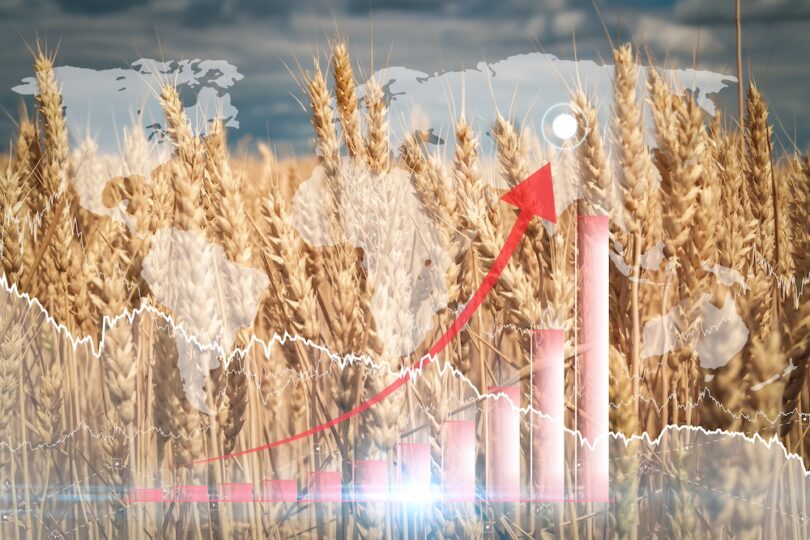In recent years, the issue of rising food prices has become a pressing concern for consumers and producers alike. With inflation affecting everyday essentials, it’s crucial to find innovative ways to tackle this growing problem. This blog post will explore sustainable solutions that can help combat increasing food prices, offering practical insights and examples to guide our readers. Whether you are a consumer looking to save on groceries or a farmer seeking efficient practices, this post is for you.
Why Food Prices Are Rising
First, let’s understand why food prices are escalating. Several factors contribute to this phenomenon, including climate change, supply chain disruptions, and economic fluctuations. Climate change, for instance, has altered weather patterns, affecting crop yields and making farming more unpredictable. Supply chain issues, aggravated by the COVID-19 pandemic, have increased transportation costs, which are then passed on to consumers. Understanding these causes is the first step in addressing the problem.
The Impact of Climate Change on Agriculture
Climate change has a profound impact on agriculture, making it a significant factor in rising food prices. Unpredictable weather events like droughts and floods can destroy crops, leading to reduced supply and higher prices. Farmers must adapt to these changes by adopting sustainable practices. For example, using drought-resistant crops can ensure a stable yield even in adverse conditions. Additionally, implementing water conservation techniques can help manage scarce resources more effectively.
Sustainable Agriculture Practices
Sustainable agriculture is key to combating rising food prices. Practices such as crop rotation, organic farming, and integrated pest management can boost productivity while preserving the environment. Crop rotation, for instance, improves soil fertility and reduces the need for chemical fertilizers, lowering costs for farmers. Organic farming avoids synthetic pesticides, promoting healthier produce and reducing environmental harm. Integrated pest management uses natural predators to control pests, minimizing chemical use and enhancing crop resilience.
The Role of Technology in Agriculture
Technology plays a pivotal role in modern agriculture, offering innovative solutions to age-old problems. Precision farming, for example, uses GPS and data analytics to optimize planting and harvesting, increasing efficiency and reducing waste. Drones can monitor crop health, allowing farmers to address issues promptly. These technological advancements not only improve productivity but also help reduce costs, making food more affordable for consumers.
Community-Supported Agriculture (CSA)
Community-supported agriculture (CSA) is a model that supports local farmers while providing consumers with fresh, affordable produce. In a CSA, consumers purchase shares of a farm’s harvest in advance, securing a steady income for farmers and a regular supply of produce for themselves. This model reduces reliance on long supply chains, lowering transportation costs and environmental impact. By participating in a CSA, consumers can enjoy seasonal, locally grown food and support sustainable farming practices.
Urban Farming Initiatives
Urban farming is another sustainable solution to rising food prices. By growing food in urban areas, communities can reduce their dependence on distant suppliers and lower transportation costs. Rooftop gardens, community plots, and vertical farms are examples of urban farming initiatives that can provide fresh, affordable produce. These projects also promote environmental sustainability by greening urban spaces and reducing the carbon footprint of food production.
Reducing Food Waste
Food waste is a significant issue that contributes to higher food prices. By reducing waste, we can make better use of existing resources and lower overall costs. Consumers can take simple steps to reduce food waste, such as planning meals, storing food properly, and using leftovers creatively. At the industry level, businesses can implement strategies to minimize waste during production, transportation, and retail. For example, supermarkets can donate unsold food to charities, ensuring that surplus produce benefits those in need rather than going to waste.
Promoting Local Food Markets
Local food markets play a vital role in combating rising food prices. By buying directly from local farmers, consumers can access fresh produce at lower prices, while farmers receive fair compensation for their products. These markets also strengthen local economies and reduce the environmental impact of long-distance transportation. To support local food markets, communities can organize farmers’ markets, food co-ops, and farm-to-table initiatives, fostering a culture of sustainable consumption.
The Benefits of Sustainable Packaging
Sustainable packaging is another important consideration in the fight against rising food prices. Traditional packaging materials, such as plastic, contribute to environmental pollution and add to the cost of food production. By adopting sustainable packaging solutions, such as biodegradable materials and reusable containers, businesses can reduce costs and minimize their environmental footprint. Consumers can also play a role by choosing products with eco-friendly packaging and advocating for sustainable practices in the food industry.
Government Policies and Support
Government policies and support are crucial in promoting sustainable agriculture and combating rising food prices. By providing subsidies and incentives for sustainable farming practices, governments can encourage farmers to adopt environmentally friendly methods. Additionally, investing in research and development can lead to new innovations that enhance agricultural productivity and resilience. Policymakers can also implement regulations to reduce food waste and support local food systems, ensuring a stable and affordable food supply for all.
Educating Consumers
Educating consumers about sustainable practices and the impact of their choices is essential in the fight against rising food prices. By raising awareness about the benefits of sustainable agriculture and local food systems, we can encourage more people to make environmentally friendly choices. Educational campaigns, workshops, and community events can provide valuable information and inspire action. When consumers understand the importance of sustainability, they are more likely to support initiatives that promote a healthy planet and affordable food.
Building a Sustainable Future
In conclusion, rising food prices are a complex issue that requires a multifaceted approach. By adopting sustainable agriculture practices, leveraging technology, supporting local food systems, reducing waste, and advocating for policy changes, we can create a more resilient and affordable food supply. It is up to all of us—farmers, consumers, businesses, and policymakers—to work together towards a sustainable future.
If you’re inspired to take action, start by exploring local food markets, reducing food waste in your home, or joining a community-supported agriculture program. Every small step can make a big difference in combating rising food prices and promoting sustainability.
For more insights and practical tips, sign up for our newsletter and join our community of food enthusiasts committed to making a positive impact. Together, we can build a future where nutritious, affordable food is accessible to all.







